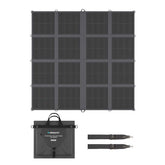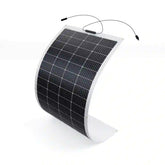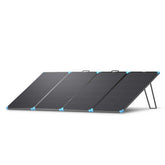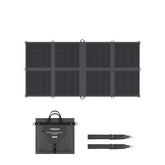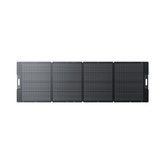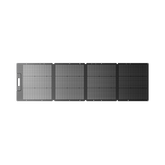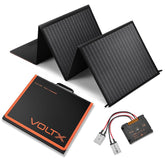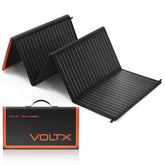Filter
11 results
20
- 10
- 15
- 20
- 25
- 30
- 50
Featured
- Featured
- Best selling
- Alphabetically, A-Z
- Alphabetically, Z-A
- Price, low to high
- Price, high to low
- Date, old to new
- Date, new to old
Sort
Sort by:
- Featured
- Best selling
- Alphabetically, A-Z
- Alphabetically, Z-A
- Price, low to high
- Price, high to low
- Date, old to new
- Date, new to old
-
Vendor:Renogy
Renogy 400W Solar Panel Blanket – Lightweight, High-Efficiency & Built for Off-Grid Power
Get serious solar power without the bulk. The Renogy 400W Solar Panel Blanket is the lightest, most compact 400W solar blanket in its class; featuring cutting-edge N-Type cells with 25% efficiency for faster, more consistent charging wherever you roam. Weighing just 7.3kg and folding...- $699.00
- $699.00
- Unit price
- / per
-
Vendor:Renogy
Renogy 200W 12V Flexible & Lightweight Monocrystalline Solar Panel – Bendable, Durable & High Efficiency
Power your off-grid lifestyle with the versatility and lightweight performance of the Renogy 200W Flexible Solar Panel. Delivering up to 1000Wh per day in ideal conditions (5–6 hours of direct sunlight), this panel is perfect for curved or irregular surfaces on caravans, campervans, boats,...- $379.00
- $379.00
- Unit price
- / per
-
Vendor:Renogy
Renogy 220W Portable Solar Panel – Lightweight, Foldable & IP68-Rated
Get reliable solar power in a travel-friendly package. The Renogy 220W Portable Solar Panel is perfect for campers, caravanners, and off-grid travellers who need dependable charging without bulky gear. Weighing just 7.2kg, it folds down compactly for easy transport, yet delivers serious 220W output...- $449.00
- $449.00
- Unit price
- / per
-
Vendor:Renogy
Renogy 400W Compact Portable Solar Panel – Lightweight, Foldable & High Output
Maximise your off-grid charging potential without the back-breaking weight. The Renogy 400W Compact Portable Solar Panel combines exceptional power output with a space-saving, lightweight design; perfect for serious off-grid setups, caravanners, and 4WD adventurers who need high-wattage solar in a portable form. Weighing only...- $799.00
- $799.00
- Unit price
- / per
-
Vendor:Renogy
Renogy 200W Portable Solar Panel Blanket – Lightweight, Foldable & High Efficiency
Harness serious solar power without the bulk. The Renogy E.FLEX-CORE 200W Solar Panel Blanket delivers high-output charging in a lightweight, compact design; ideal for campers, 4WDers, and off-grid travellers who want maximum efficiency without sacrificing storage space. Built with upgraded N-Type cells for 25%...- $399.00
- $399.00
- Unit price
- / per
-
Vendor:Bluetti
BLUETTI PV350D Solar Panel – 350W Foldable Monocrystalline Panel with MC4, Adjustable Angle & ETFE Coating
Harness serious solar power with the BLUETTI PV350D Solar Panel, delivering a massive 350W output in a compact, foldable design. Built with premium monocrystalline cells, a high-efficiency ETFE surface, and adjustable kickstands for optimal sun exposure, this panel is perfect for those who need...- $1,099.00
$1,399.00- $1,099.00
- Unit price
- / per
-
Vendor:Bluetti
BLUETTI PV200D Solar Panel – 200W High-Efficiency Foldable Panel with MC4, IP67 Waterproof
Capture more solar energy wherever your adventures take you with the BLUETTI PV200D Solar Panel—a 200W foldable monocrystalline panel engineered for maximum efficiency and total portability. Designed for off-grid travellers, remote workers, and emergency preppers, the PV200D offers robust solar charging in a durable,...- $599.00
$799.00- $599.00
- Unit price
- / per
-
Vendor:Bluetti
BLUETTI PV120D Solar Panel – 120W Foldable Monocrystalline Panel with MC4, Lightweight & Outdoor-Ready
Capture clean, reliable power anywhere with the BLUETTI PV120D Solar Panel—a 120W high-efficiency monocrystalline panel designed for off-grid adventures, camping, and emergency backup. With up to 23.4% conversion efficiency, adjustable kickstands, and a rugged foldable design, the PV120D delivers optimal performance with total portability....- $489.00
$489.00- $489.00
- Unit price
- / per
-
Vendor:VoltX
VoltX 12V 160W Folding Solar Mat – Lightweight, High-Efficiency Power for Off-Grid & Outdoor Use
Unlock reliable solar power on the go with the VoltX 12V 160W Folding Solar Mat—your compact and lightweight companion for camping, 4WD touring, and off-grid adventures. Built with premium Monocrystalline Grade A cells, it boasts a 23% conversion efficiency, delivering consistent energy even in...- $359.00
- $359.00
- Unit price
- / per
-
Vendor:VoltX
VoltX 12V 200W ETFE Solar Mat – Rugged, High-Efficiency Foldable Solar Blanket for 4WD, Camping & Off-Grid Power
Maximize your off-grid power setup with the VoltX 200W ETFE Solar Mat, the ideal solar solution for 4WD, caravanning, camping, and remote living. With high-efficiency monocrystalline cells and a tough ETFE surface layer, this panel delivers superior durability, optimal sunlight absorption, and long-lasting performance...- $1,099.00
- $1,099.00
- Unit price
- / per
-
Vendor:VoltX
VoltX 12V 100W ETFE Solar Mat – Lightweight, Durable & High-Efficiency Solar Blanket for Camping & 4WD
Harness the power of the sun with the VoltX 100W ETFE Solar Mat—the ultimate off-grid charging companion for caravanners, campers, and 4WD adventurers. Built with premium monocrystalline cells and an ETFE laminated coating, this rugged solar blanket delivers exceptional light transmission (up to 95%)...- $659.00
- $659.00
- Unit price
- / per
